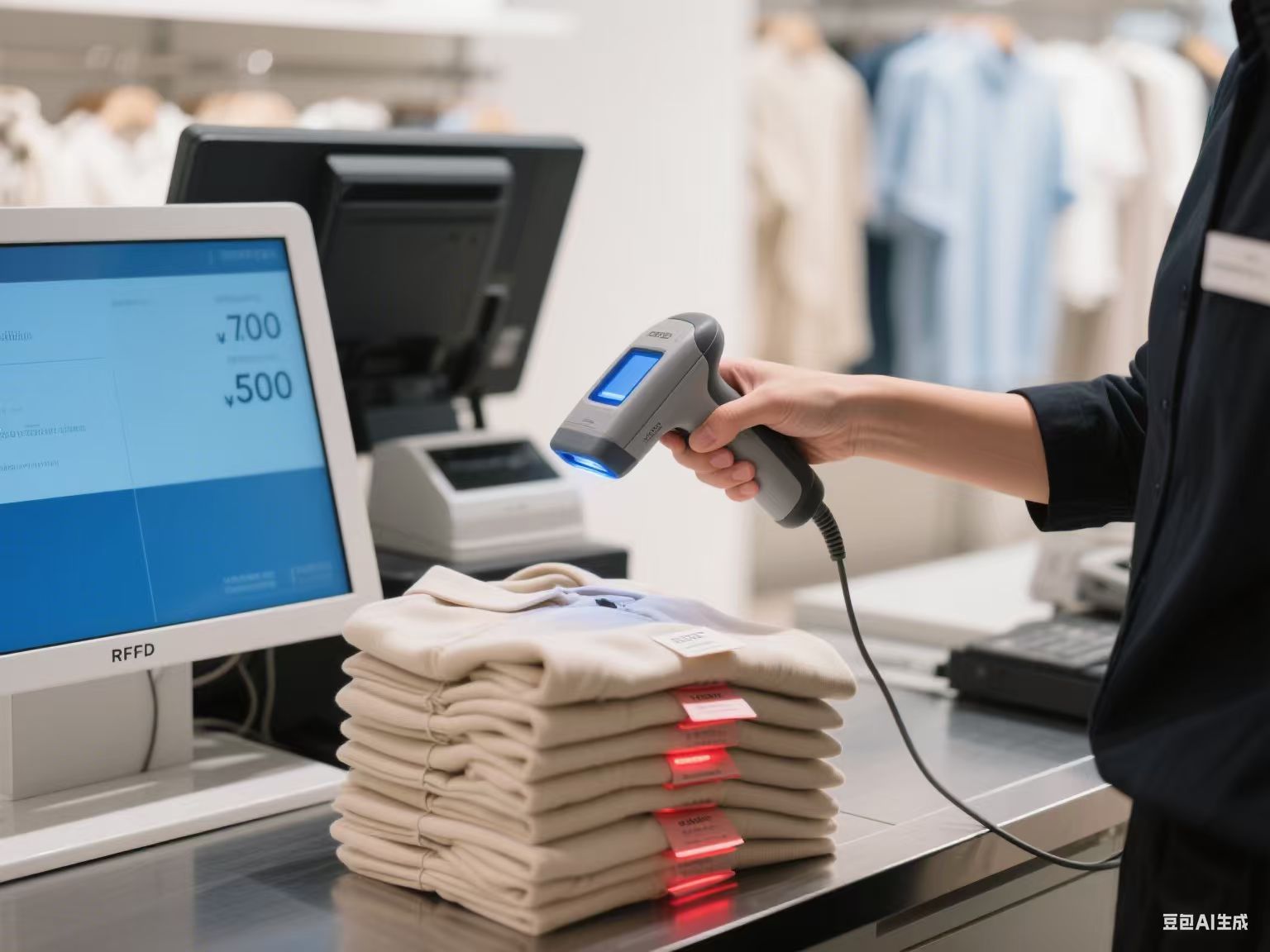Have you ever seen cashiers at supermarkets instantly check out items simply by holding the basket of goods
against the reader, without scanning barcodes? Behind this incredible efficiency lies the quiet power of RFID
(Radio Frequency Identification) technology. This tag, smaller than a postage stamp, is revolutionizing
efficiency from factory floors to retail shelves, from logistics warehouses to operating tables, with its unique
"contactless" recognition capabilities.

I. RFID Technology: Information Tentacles That Transcend Line of Sight
Imagine being able to read an item's information solely through radio waves, without the need for eye contact—this is the core
magic of RFID. A complete RFID system consists of three parts:
RFID tags: These are the "electronic ID cards" of items, consisting of a chip (which stores data) and an antenna. They are
categorized by their power supply method as follows:
Passive tags: These rely on radio waves emitted by a reader to activate and transmit data. They are low-cost, compact, and
have a long lifespan, making them the most widely used.
Active tags: Powered by their own batteries, they offer stronger signals and longer read/write ranges (up to 100 meters), but
are also expensive and bulky.
Semi-active tags: The battery is only used to maintain the chip's operation; communication power still comes from the
reader/writer, resulting in performance somewhere in between.
Reader: The information "transmitter/receiver," emitting radio frequency signals to activate the tag and read/write its stored data.
Application system: The data "brain," processing information collected by the reader/writer to drive business processes (such as
inventory updates and access control).
Compared to traditional barcodes, RFID offers disruptive advantages such as batch reading, penetrating identification, data
read/write capabilities, and strong environmental tolerance, making it a powerful tool for complex environments.

II. RFID Tags: The Efficiency Engine Driving Thousands of Industries
1.Retail and Supply Chain: Solving the Inventory Mystery
Smart Stores: Brands like ZARA and Decathlon embed RFID tags on every item. During inventory checks, employees scan
their handheld devices and count thousands of items in seconds, achieving over 99% accuracy and increasing efficiency by
dozens of times. Self-service checkout for customers also becomes faster.
Supply Chain Visibility: From the factory to the distribution center to the store, RFID tags act as mobile "data messengers."
By mandating the use of RFID pallet/box tags on suppliers, Walmart has achieved real-time tracking of goods in transit,
significantly reducing mis-shipments, missed shipments, and inventory backlogs, and improving overall supply chain efficiency
by over 20%.
2.Logistics and Warehousing: Let Goods "Identify Themselves"
Automated Warehousing: In smart warehouses like JD.com and Amazon, RFID-tagged goods are instantly identified and
routed by channel readers as they travel along high-speed conveyor belts, significantly increasing throughput.
Asset Tracking and Management: Logistics assets such as containers, pallets, and forklifts are equipped with RFID tags,
allowing managers to track their location, status, and usage in real time, reducing idle assets and loss.

3.Manufacturing: The Smart Eye of the Production Line
Work-in-Process Tracking: On automotive assembly lines, every key component (such as engines and doors) is tagged with
an RFID tag. The system accurately tracks its location and process completion, enabling flexible production and error-free assembly.
Tool and Equipment Management: RFID tags are attached to expensive specialized tools and testing equipment to quickly
locate and record usage and maintenance cycles, improving equipment utilization and timely maintenance.
4.Healthcare: The Lifeline of Safety and Efficiency
High-Value Consumables and Drug Management: Expensive implants (such as artificial joints and heart stents) and specialty
medications in the operating room have their unique serial numbers, expiration dates, batch numbers, and other information
stored on RFID tags. Automatic verification upon use ensures zero errors, prevents expiration and misuse, and enables accurate
billing. Studies have shown that RFID management can reduce operating room consumable inventory costs by 15-20%.
Patient Safety and Process Optimization: RFID-integrated patient wristbands enable rapid identity verification, medication safety
verification, and activity area management (for example, preventing infants from being mishandled), improving diagnostic and
treatment safety and efficiency.
5.Smart Cities and Life: The Invisible Guardian of Convenience
Smart Libraries: Books embedded with RFID tags allow readers to borrow and return books by themselves, while librarians can
quickly check and inventory books, eliminating tedious manual operations.
Smart Transportation: ETC (Electronic Toll Collection) is a typical application of RFID, allowing vehicles to instantly deduct fees
when passing through toll booths on highways. It is also widely used in shared bicycles and asset management (such as trash
cans and fire hydrants).
Access Control and Ticketing: RFID access cards and e-tickets for businesses, campuses, and convention centers provide a safe
and convenient contactless access experience.

III. Future Outlook: Smarter, More Integrated, More In-Depth
With the continuous evolution of technology (such as smaller and cheaper chips, integrated sensing functions, and improved
reading performance) and the continuous decline in costs, the application boundaries of RFID will continue to expand:
Deep Integration with AIoT: RFID data will become a key source of IoT big data. Combined with AI analysis, it will enable
smarter predictive maintenance, demand forecasting, and decision optimization.
Explosive Item-Level Applications: As tag costs drop to mere cents, RFID will penetrate from case/pallet-level management to
every common commodity, fundamentally transforming retail and asset management.
Exploring Emerging Fields: Food traceability (full-chain tracking from farm to table), smart packaging (monitoring temperature,
humidity, and freshness), and smart agriculture (livestock management and crop monitoring) offer enormous potential.

Challenges and Considerations:
The widespread adoption of RFID also faces challenges: the initial cost of large-scale deployment, the promotion of global
standards, data security and privacy protection, and the impact of metal/liquid environments on signals still require ongoing
attention and resolution.
Conclusion:
RFID tags, tiny chips carrying the "digital DNA" of items, are quietly becoming embedded in the fabric of our world. They
empower silent objects with the ability to "tell themselves," allowing data flows to penetrate physical barriers, driving
efficiency leaps and reshaping processes. From a piece of clothing on a shelf to a shipping container speeding down a
highway, from precision instruments on an operating table to the pulse of a city's operations, RFID, with its "contactless"
intelligence, is weaving an information network that connects everything, silently driving industrial innovation and the advent
of smart living. In the future, as everything becomes connected, RFID will undoubtedly play an even more fundamental and critical
role.

